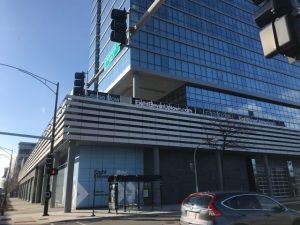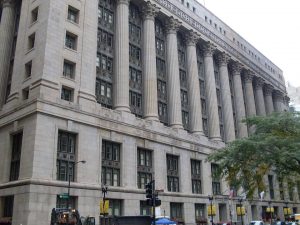By James Ginderske of Urban Coaster
Lights out tonight…
Trouble in the heartland
Got a head on collision
Smashing in my guts, man
I’m caught in a crossfire
That I don’t understand…
“Badlands,” Bruce Springsteen
July 7, 2009 – Rogers Park and Edgewater non-profit service providers face a historic gutting of their State of Illinois funding, cuts that if implemented will fundamentally alter daily life for thousands of people in need within those communities.

On June 18, in a tremendous outpouring of concern for their client’s futures, as well as their own, local non-profit agencies and many supporters took to the streets alongside their peers from across the city and suburbs at a protest in front of the State of Illinois Building to say they’ve had enough.
The crisis, due to the budget conflict between House Speaker Michael Madigan, Senate President John Cullerton and Gov. Pat Quinn, will now be more difficult to resolve as the legislature returns to a special session that requires super-majorities to pass legislation. As of this writing, no one is showing any sign of backing down.
The thousands of people who attended the demonstration demanded to be recognized as something other than a bargaining chip in the budgetary brinkmanship orchestrated by the leaders of state government.
They carried homemade signs, many with photographs of people who due to disabilities were unable to be there in person. One group carried a coffin with a child lying inside. Within the crowd, walls of young women in matching t-shirts waved colorful signs written in Spanish.
News coverage in the Chicago Tribune for some reason noted that many of the protesters were people of color. In fact, nearly all races were present in significant numbers. Viewed from across the street, the gathering seemed a great sea of desperation forced up against a glass-encased circular wall that resembled ancient Rome’s Castel Sant’Angelo fortress.
Many of the leaders of Illinois’ social-service community were there, reduced to pleading for mercy for their clients under the glaring sun reflected off the building. They included day-care givers, HIV services providers, tutors, and people who teach very young mothers parenting skills.
They were joined by groups who help survivors of domestic violence rebuild their lives, who mentor youth, and others who work to interdict youth violence, along with mental-health workers, elder-care workers, and community organizers.
There were receivers of all these services, including many children seeing for perhaps the first time the trusted leaders of their communities shaken to the core and unable to say to them that everything would be alright.
One had to wonder how deeply that registered. To be sure, ironies abound: A community that writes a $250 ticket for parking in a space reserved for handicapped people may soon abandon such individuals to those very same streets.
A system that tells children how important their education is for future employment prospects is now prepared to cut both the help those kids need to learn the language skills to get that schooling, and the day care that enables their parents to hold a job.
One man, beholding the spectacle while smoking in front of the building across the street at which he works, said quietly: “They [the legislature] see these people as pawns. Nothing more. How else could they let this happen?” He added that: “What you see here are thousands of people forced to beg for basic needs. Things that everyone knows are necessities of life. It’s f-cking sick.”
Especially far-reaching in terms of consequences are the cutbacks to subsidized child care, which allows parents to work to support families, and mental-health services that give impossible-to-insure patients access to critical medications.
Due to the super-majority requirement of the special session, Republican legislator’s support is now needed to pass a budget. Illinois is sharing the stage with states like California, where social services formerly considered to be essential are in danger of becoming relics of a bygone era.
While conservatives going back to the New Deal have long viewed such cuts as a policy goal, the twist in Illinois is that the Democratic-party-controlled legislative and executive branches in the last session embraced the results, if not the theory of those same beliefs.
The faces of tourists sitting atop bright red, double-decker downtown tour buses froze in fear as they rounded the corner and heard the sound of the massive crowd. Their expressions changed as they realized they weren’t in danger, then looked shocked as they watched the enormous gathering sandwiched into the small space, yelling and drumming, with their hundreds of homemade signs.
Whether the tourists had time to understand the full reason for the mayhem was doubtful. But judging from the way they stood and snapped photographs, it was clear they knew that something significant was playing out before them.
Another passerby, a woman in a black escalade with tinted windows, drove by the demonstration slowly, rolled down her power window and said as her eyes grew large, “Oh my God,” while a traffic officer waving a ticket book screamed at her to keep moving.
Upon the original Castel Sant’Angelo stands a statue of Saint Michael, where according to legend the Archangel appeared in the year 590 sheathing his sword to signal the end of the Plague of Justinian. The plague had devastated Rome’s population and ushered in the Dark Ages. There is no such statue on top of the somewhat similar looking State of Illinois Building.
At least not yet.






Be First to Comment